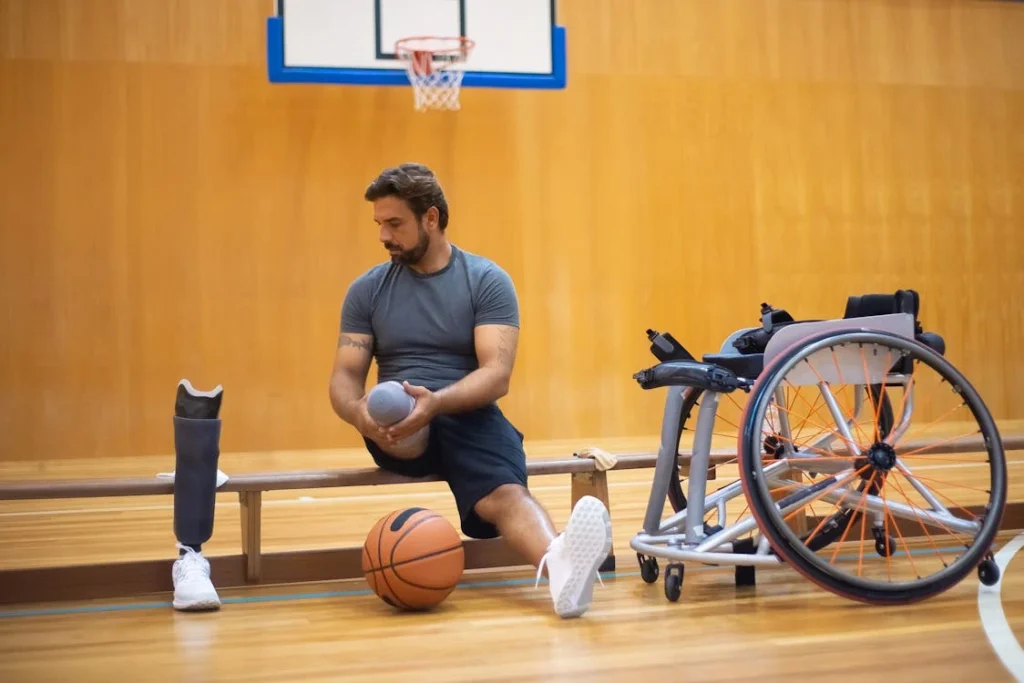Wearing a prosthetic limb is not just about walking again. It’s about feeling stable, secure, and comfortable with every step. One of the most overlooked factors in achieving this comfort is the liner — the soft layer that sits between the socket and your skin.
Many people focus on the socket’s shape or the suspension system when thinking about fit. But the liner plays a huge role in how your limb feels during daily use. It cushions your residual limb, manages pressure, helps reduce skin problems, and can even affect how confident you feel when walking or moving around.
Different liner materials behave in different ways. Some are soft and forgiving. Others are firm and supportive. And some adapt to your body in ways that aren’t obvious until you’ve worn them for a while. Knowing how these materials interact with your limb can be the difference between a prosthesis you wear all day with ease — and one you can’t wait to take off.
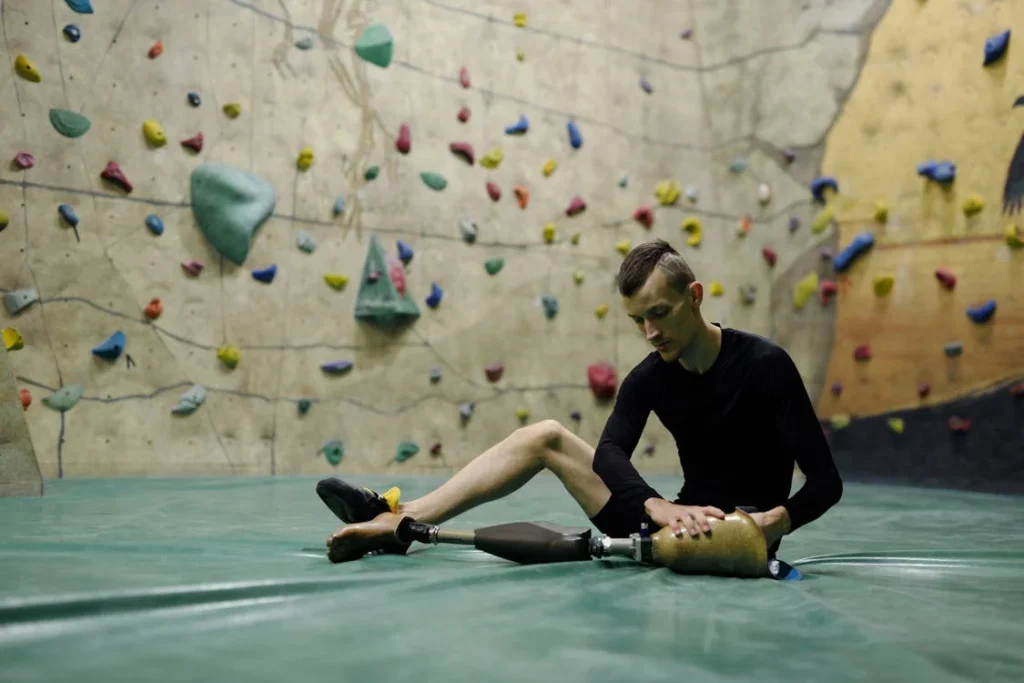
Understanding the Role of a Prosthetic Liner
The Invisible Bridge Between Skin and Socket
When someone first puts on a prosthesis, the part they feel most is not the hard outer shell or the foot at the end — it’s the liner. This soft sleeve wraps directly around the residual limb.
It shapes the way the socket feels, how it holds onto the limb, and how pressure is spread out during movement.
Without a liner, the rigid socket would press directly on the skin and tissue. That could quickly lead to pain, bruising, and pressure points that get worse with every step.
The liner creates a barrier. It helps reduce friction, absorb shocks, and spread the load more evenly across the limb.
But not all liners are the same. What they’re made of changes how they feel, how they react to movement, and how they protect the skin.
Some materials are more forgiving and adapt well to bony or irregular limb shapes. Others provide strong support but may feel tight or warm after a few hours of wear.
The goal is always the same: to find a liner that makes the socket feel like a natural part of the body — one that supports without squeezing, cushions without slipping, and protects without trapping too much heat or moisture.
Why Liner Material Matters More Than You Think
At first glance, a liner might look like a simple sleeve. But inside, its material can behave very differently under stress.
Some liners compress more when you walk, which helps absorb impact but can create movement between the limb and the socket. Others are more stable, helping with control and alignment, but may not offer the same level of softness.
This is important because every person’s limb is different. Some have more soft tissue. Some have sharper bone edges.
Some swell during the day. Others may be very sensitive due to nerve endings or skin grafts. The liner must respond to these changes, not fight them.
Material also affects how well the liner grips the skin. Some liners create a strong seal, which helps with suspension — the way the prosthesis stays attached to your body.
Others may slide more easily, which can lead to rubbing or chafing if the socket isn’t adjusted perfectly.
That’s why the choice of material should never be random. It should be based on the user’s specific needs, their daily activity level, their skin type, and their overall goals.
A person who walks all day at work needs something different than someone who wears their limb only for short trips or light use.
How Different Materials Behave Under Pressure
Silicone: Firm and Supportive
Silicone liners are known for their firmness and control. They don’t compress much under weight, which makes them ideal for users who need stability during walking or standing.
They hold their shape well, which helps maintain a consistent fit between the limb and the socket.
This can be a big advantage for people with active lifestyles or for those using advanced components like microprocessor-controlled knees or feet. When control matters, silicone often delivers.
But this firmness can also be a drawback for people with sensitive skin or thin tissue coverage. If there’s little padding between the bone and the liner, silicone can feel too hard.
It may increase the risk of pressure sores or skin irritation, especially if the socket isn’t perfectly aligned.
Another factor with silicone is heat. It tends to trap warmth, which can lead to sweating. That might not be an issue in cooler climates, but in warmer areas or during physical activity, it can make the limb feel hot and sticky.
Over time, this can lead to skin breakdown or rashes, especially if moisture isn’t managed properly.
Despite these challenges, silicone liners remain a strong choice for users who need reliable control and can tolerate firmer contact.
When fitted correctly and combined with a breathable socket design, silicone can offer excellent performance.
Thermoplastic Elastomers: Soft and Adaptable
Thermoplastic elastomers, sometimes just called TPEs, are softer and more forgiving than silicone.
They mold more easily to the shape of the residual limb, making them a popular choice for users with uneven limb shapes or pressure-sensitive areas.
One of their biggest strengths is comfort. TPE liners provide a gentle, cushioned feel that helps reduce pressure on bony areas.
They also tend to breathe a bit better than silicone, which can help manage moisture and reduce overheating.
Because they’re more adaptable, TPE liners can also help reduce pistoning — the up-and-down movement that happens when the limb shifts inside the socket.
This can improve suspension and reduce the risk of blisters or shear forces.
However, TPE liners are not as durable as silicone. They can stretch out over time, especially with heavy use, which may reduce their effectiveness.
Users who are highly active may need to replace them more often or switch to a firmer liner as their needs change.
Still, for many people, especially those new to prosthetic use or those with fragile skin, TPE liners offer a balance of comfort and adaptability that makes the socket feel more wearable — not just technically correct, but actually comfortable.
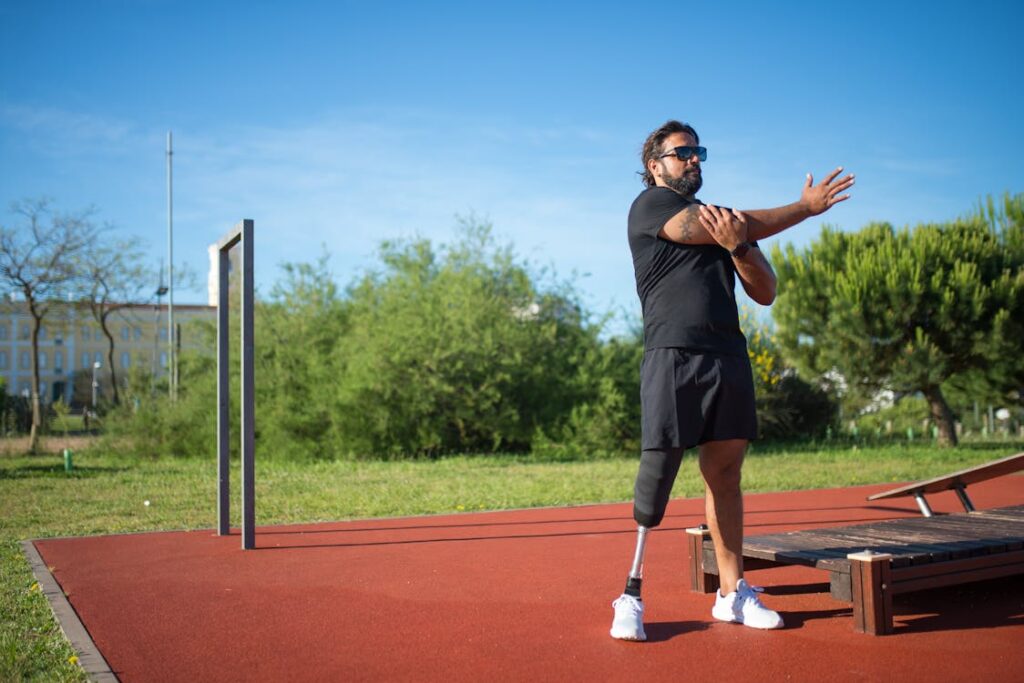
How Liner Choice Shapes Daily Comfort
Managing Pressure and Movement Throughout the Day
The liner is in contact with the body all day. From the first time you put on your prosthesis in the morning until the moment you take it off at night, the liner is working constantly to manage the interface between your skin and the rigid socket. What many people don’t realize is how dynamic that interaction really is.
As the day goes on, your residual limb changes. It may swell due to fluid retention or shrink slightly with activity. It may become warm from body heat or friction.
These changes, though natural, can cause discomfort if the liner doesn’t adapt well. A good liner material will cushion these changes, absorbing pressure and reducing friction even when the limb’s volume fluctuates.
This is where the balance between softness and structure becomes critical. If the liner is too soft, it may compress too much under pressure, leading to a feeling of looseness or reduced control.
If it’s too rigid, it may not flex enough to accommodate swelling, which can cause pinching or pressure points.
The ability to manage these subtle shifts is what separates a well-matched liner from a generic one. A user who experiences high pressure in one area may benefit from a liner that flows under load — distributing weight more evenly across the surface.
On the other hand, someone who needs stability during high-impact activity may need a firmer material that holds its shape better under pressure.
That’s why liner comfort isn’t a single feeling — it’s a pattern of feeling good, consistently, throughout the day. It’s about preventing that moment, two hours into your day, when something starts to hurt or feel out of place. And more importantly, it’s about making sure you can live your life without thinking about your limb every five minutes.
Heat and Sweat: The Hidden Enemies of Comfort
Sweat buildup is one of the most common causes of discomfort among prosthesis users — and the liner plays a key role in how well it’s managed.
Some materials are more breathable than others. Some trap heat and moisture, which can lead to skin irritation, chafing, and even infection if not cleaned properly.
When a liner holds too much heat, the skin underneath begins to sweat more. That moisture, once trapped, creates a slippery surface between the limb and the liner, which reduces grip and increases movement.
This movement, even if slight, can lead to rubbing, which creates hot spots and eventually blisters.
Different liner materials deal with heat in different ways. Silicone tends to be warmer. TPEs often allow for better air flow.
Some liners come with fabric covers or specialized surface textures that help wick away moisture and reduce heat buildup. But even with these features, regular cleaning and drying are essential.
Choosing a liner that balances support with breathability is key — especially in humid climates or for users who wear their prosthesis for long hours at a time.
Comfort isn’t just about how something feels when you first put it on. It’s about how it feels after hours of walking, standing, sitting, and moving through your day.
How Liners Affect Suspension and Control
Creating a Secure Connection to the Socket
Suspension is what keeps the prosthesis attached to your body. Without good suspension, the limb can slip, shift, or feel unstable — all of which reduce control and confidence.
The liner plays a central role in how suspension works. Its surface texture, elasticity, and grip all contribute to how well the socket stays in place.
Some liners are designed to work with pin-lock systems, where a pin at the end of the liner locks into the socket. Others use suction or vacuum systems, where a tight seal is created to hold the socket in place.
In both cases, the material must provide enough structure to form a seal without creating pressure points or discomfort.
Silicone liners tend to provide stronger grip against the skin, making them suitable for suction-based systems.
Their firmness helps create a consistent seal. But again, if the skin is too sensitive or the residual limb has uneven contours, this firm grip may feel harsh or cause irritation.
Softer liners, like those made from TPEs or gel blends, provide a gentler grip. They may not create the same strong seal but can reduce shear forces and feel more comfortable for users with fragile skin.
The trade-off is often in stability — these liners may require more precise socket fit to prevent slippage.
Choosing the right liner material for suspension isn’t about finding the strongest hold. It’s about finding a hold that feels secure, doesn’t cause discomfort, and gives the user confidence to move naturally without second-guessing every step.
Enhancing Proprioception and Natural Movement
Proprioception is your body’s ability to sense movement and position. In the context of prosthetics, it refers to how well you can feel your limb in space — even though you can’t feel the prosthesis directly.
The liner influences this feeling more than most people realize.
A liner that’s too soft can create a delayed or muffled sense of movement. The user might feel like they’re slightly disconnected from the prosthesis, making it harder to judge balance or control fine movements.
A liner that’s too stiff may cause discomfort but offer better feedback and control.
That’s why many experienced users tend to prefer liners that give them a clearer sense of what’s happening beneath them.
They want to feel the ground through the prosthesis. They want to know when their heel strikes or when their weight shifts. The liner should allow for that feedback without compromising on comfort.
It’s not about choosing the thinnest liner or the firmest one. It’s about choosing one that lets your body and your prosthesis work as a team — where your movements feel intentional, and your limb feels like a natural part of your body again.
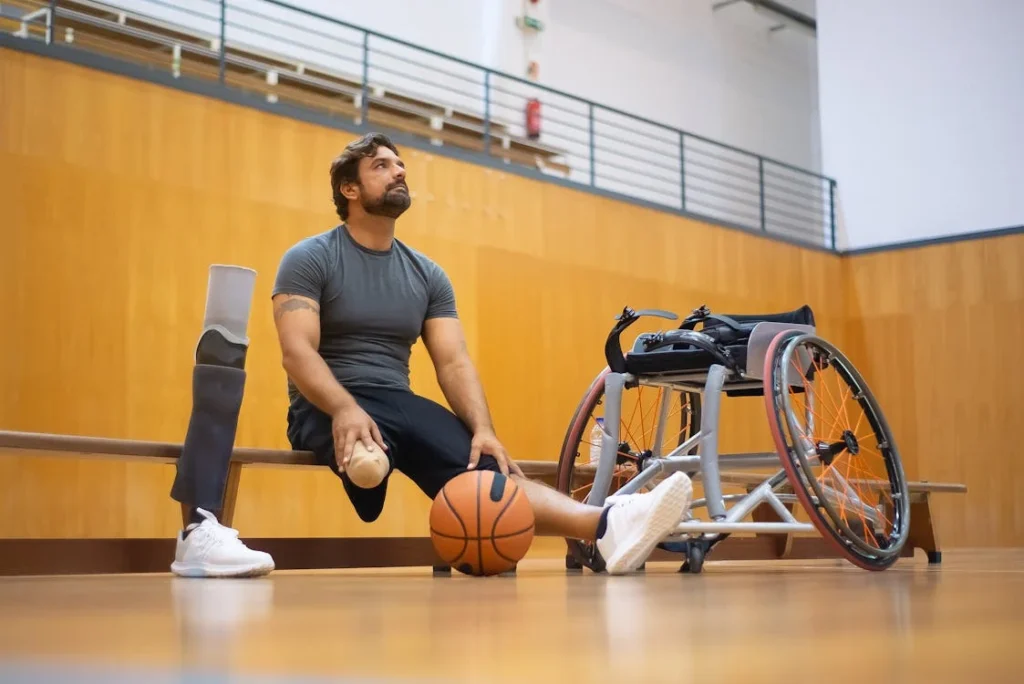
Durability, Maintenance, and Long-Term Performance
What Happens to Liners Over Time
Liners are not a one-time fit-and-forget component. Over time, they wear down. The more you move, sweat, stretch, and compress them, the more they lose their original shape and support. This natural aging affects how they perform and how your socket feels day to day.
Some liners start to thin out in certain areas, especially under the knee or at the end of the residual limb. When this happens, pressure is no longer evenly distributed.
You may begin to feel sharp spots or increased stress where there was once cushioning. That’s often the first sign the liner is losing effectiveness.
Other liners might stretch too much. They no longer hug the limb as tightly, which affects suspension and stability.
This stretching can cause unwanted movement, leading to friction burns or skin irritation. In some cases, the liner might also start to tear, especially around the edges or at connection points like the locking pin.
Material type plays a big role in durability. Silicone liners tend to last longer because of their strength and shape memory. TPE and gel liners, while softer and often more comfortable initially, may degrade faster with heavy use.
This doesn’t mean one is better than the other — it just means the right choice depends on how the liner will be used.
Being aware of how a liner behaves over time allows users to check for early signs of wear. And being proactive in replacing liners before they become uncomfortable can prevent bigger problems like wounds or gait issues.
Cleaning and Hygiene Impact Comfort and Skin Health
Liner hygiene is one of the most important — and often neglected — parts of prosthetic care. Because the liner sits directly against the skin, it collects sweat, skin oils, dead cells, and bacteria throughout the day.
If it’s not cleaned regularly, these build up and create an unhealthy environment for the skin.
Users who don’t clean their liners daily often begin to notice itching, rashes, or foul smells. In some cases, bacterial or fungal infections can develop.
These not only cause discomfort but can force someone to stop using their prosthesis while they heal.
Different liner materials have different cleaning needs. Silicone is easier to clean and doesn’t absorb moisture, making it more hygienic. TPE and gel liners may absorb small amounts of sweat and need more careful washing and drying.
A clean liner helps maintain skin health, improves comfort, and extends the life of the liner itself. Warm water and mild soap are usually enough, but it’s important to follow manufacturer guidelines.
Harsh chemicals or abrasive scrubbing can damage the material, shortening its life.
Drying is just as important. A damp liner put back on the limb can cause skin maceration — a softening of the skin that makes it more prone to injury.
Liners should be air-dried completely before use, and storage should be in a clean, cool space away from direct sunlight.
These small daily habits make a big difference in how a liner feels and how long it supports the user effectively.
Matching the Right Liner to the Right Lifestyle
Activity Level Drives Material Needs
A person who runs, climbs stairs regularly, or works on their feet all day places much more stress on a liner than someone who wears their prosthesis for a few hours in the evening.
That’s why activity level should be a key factor in choosing the right liner material.
Active users often benefit from firmer liners that offer strong control and structure. Silicone is a common choice here.
It doesn’t break down as quickly under stress and maintains its grip even during high-impact movement. The tradeoff is it might feel less forgiving, especially at pressure points, and could get warmer during long use.
Lower-activity users, or those who are new to prosthetic limbs, often benefit from softer liners. Gel and TPE materials can provide a more comfortable first experience.
These liners mold to the limb better and cushion delicate skin. However, if a person transitions to more active use, the liner may need to change too.
It’s important to remember that your prosthetic needs will evolve over time. The liner that feels great in the beginning might not serve you as well six months later.
That’s why regular reviews and open communication with your prosthetist are so important. They can help guide these changes so your liner continues to match your lifestyle.
Health Conditions and Skin Type Should Guide Decisions
Some users have underlying health conditions that affect their skin or limb sensitivity. Diabetes, poor circulation, history of wounds, or fragile skin all require extra care when selecting a liner.
In these cases, a softer liner that reduces shear and provides gentle support is usually preferred.
Material flexibility is especially helpful when the residual limb shape is irregular or has bony prominences. A firmer liner could cause too much pressure in these areas, while a more elastic material will wrap around them more evenly.
People with allergies or sensitivities to certain compounds also need to pay attention to liner material.
Some users may react to specific gels or additives used in low-cost liners. In such cases, switching to a medical-grade silicone or a liner with a fabric covering can help minimize skin reactions.
Every limb is different. There’s no one right answer. But the more you understand your body and your activity, the better you can choose a liner that supports you — not just physically, but comfortably, every single day.
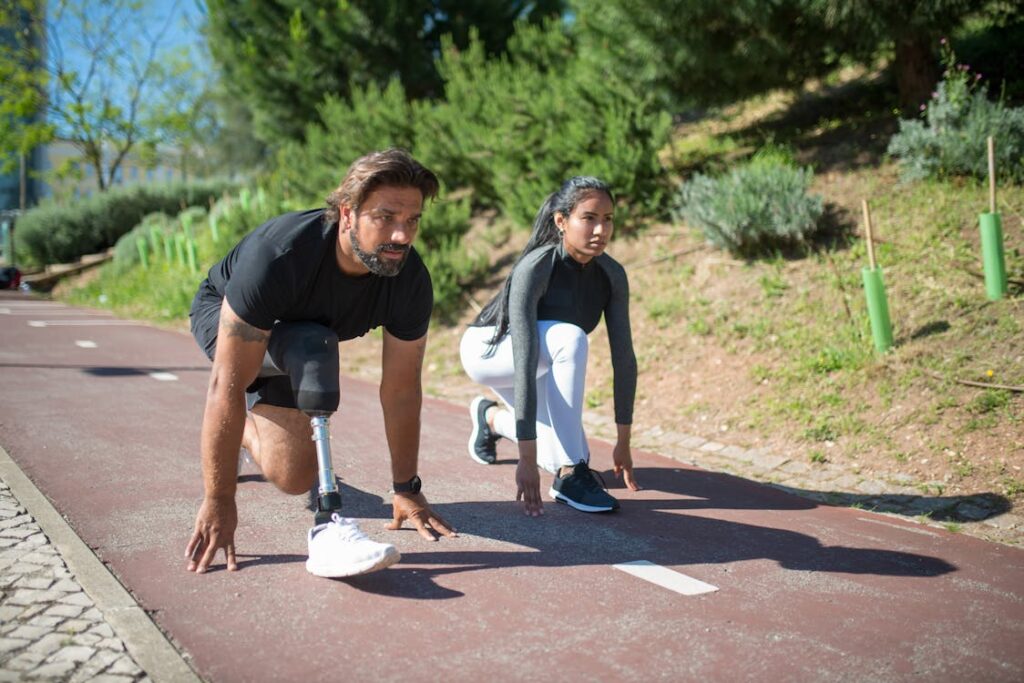
Psychological Impact of Liner Comfort on Prosthesis Use
How Small Discomforts Become Big Mental Barriers
When talking about liner materials, most conversations stay in the physical realm — pressure, skin health, fit, heat, and activity.
But there’s another dimension that matters just as much: the mental and emotional impact of how the liner feels.
Wearing a prosthesis requires commitment. You put it on every morning and take it off at night.
That means the moment your limb meets the liner, your day is either set up for success — or a quiet kind of struggle. If the liner causes even mild discomfort, your mind registers it. Maybe not loudly at first. But slowly, consistently.
This discomfort becomes a mental weight. It can cause hesitation when stepping out the door, avoidance of long walks, or even just that constant background thought: “How long can I wear this today?” The limb becomes something to manage, not something to live with.
That’s the hidden danger. A liner that presses slightly too hard, that gets just a little too hot, that slips half an inch every few steps — these aren’t just physical inconveniences.
They build mental fatigue. And when the mind is tired, people withdraw from movement, from activities, and from moments that matter.
It’s easy to overlook, especially because many users don’t immediately connect mood or motivation with liner performance. But the truth is, comfort feeds confidence.
A secure, breathable, body-matching liner frees up mental space. You don’t have to think about every step. You don’t brace for pain when sitting down. You just go. And that kind of freedom is deeply emotional.
Building Trust Between Body and Device
The goal of any prosthetic component should be to become invisible — not in the literal sense, but in how much attention it demands.
A good liner fades into the background of the user’s awareness. It doesn’t poke, pinch, heat up, or slide out of place. It just works.
When that happens, something powerful begins to grow: trust. The user begins to trust the limb, the fit, and their ability to move safely. That trust builds a sense of control. And with control comes empowerment.
But when the liner fails to provide this foundation, the opposite happens. The user begins to question every movement. They walk with caution.
They become hyper-aware of every shift or rub. The prosthesis becomes a source of doubt rather than support.
This isn’t just a comfort issue. It’s a psychological one. Because at its core, mobility is freedom — and freedom only comes when your tools are dependable.
A good liner helps build that quiet relationship of trust between the body and the device. And once that’s in place, everything else becomes possible.
The Role of Comfort in Long-Term Adoption
Many people abandon their prosthesis not because they don’t want to walk, but because they dread how it feels. That dread doesn’t usually start with the socket. It often starts with the liner.
Maybe it causes itching. Maybe it traps too much heat. Maybe it always feels slightly off. Whatever the reason, that daily irritation adds up.
And one day, the user decides they’d rather go without. Not because they’ve given up — but because their experience hasn’t given them a reason to stay.
This is why comfort isn’t a luxury or a bonus feature. It’s essential for long-term use. A liner that makes the prosthesis feel more natural increases wear time.
And increased wear time means better muscle tone, improved balance, more physical activity, and a stronger return to daily life.
It also improves self-image. When someone moves confidently, they carry themselves differently. They show up differently in the world. They feel less defined by what they’ve lost, and more connected to what they’ve regained.
So while materials, pressure distribution, and suspension are all important technical factors, none of them matter if the user doesn’t feel good wearing the prosthesis every single day. That comfort begins — and often ends — with the liner.
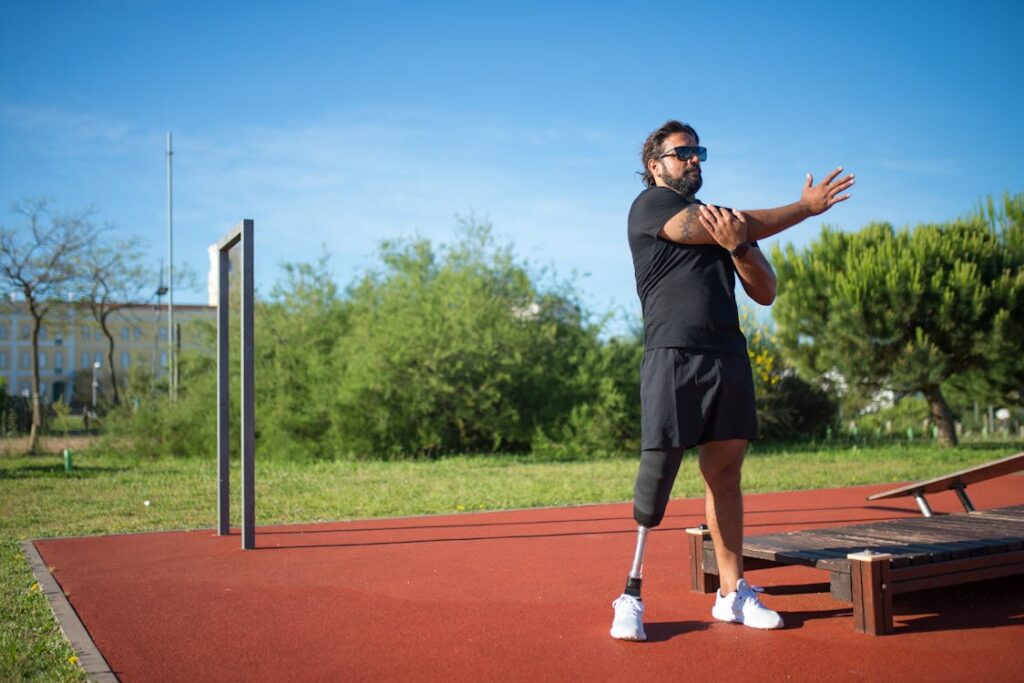
Environmental Factors That Influence Liner Performance
Climate Plays a Bigger Role Than You Think
Liner performance isn’t only about how it behaves in a clinical setting or during testing. Real life happens outside — in heat, cold, humidity, rain, dust, and more.
And for people living in regions with extreme weather conditions, the local climate can dramatically influence how a liner feels and functions.
In hot and humid climates, liners face a serious challenge: sweat. Heat builds up quickly inside the socket, and sweat has nowhere to escape.
Some materials trap this moisture more than others, creating a slippery surface that leads to chafing or skin breakdown.
The problem isn’t just the sweat — it’s the fact that most prosthetic setups don’t allow for proper airflow, making even breathable liners struggle under intense heat.
Certain materials like silicone tend to insulate more, which can worsen this problem. On the other hand, TPE or gel-based liners may handle heat better — but only to a point.
If the outer surface becomes tacky from sweat, it can stick against the socket walls, increasing friction and making donning and doffing harder.
In colder regions, the issue flips. Liners that feel soft and flexible in warm temperatures may become stiffer and less forgiving in the cold.
This can affect how easily they conform to the limb and how pressure is distributed. For users with poor circulation or nerve sensitivity, even a slight change in material softness due to cold can lead to discomfort.
These temperature-based changes don’t always show up in controlled clinic environments — which is why many users feel their liner “behaves differently” once they start living real life with it.
A liner that felt fine in the fitting room may cause issues during a long day in the sun or a chilly morning commute.
Terrain and Lifestyle Add Unexpected Stress
Where a person lives — and how they move — also affects how well a liner performs. Someone walking on smooth, tiled floors all day will put different types of strain on their liner than someone who walks on uneven village paths, climbs stairs regularly, or stands on concrete for long hours.
Rural and semi-urban environments present specific challenges that often go overlooked. Dust, for example, can enter poorly sealed sockets and settle between the liner and skin.
Even small particles can cause irritation when rubbed repeatedly during movement. Moisture from rain or sweat may not dry quickly, creating a breeding ground for bacteria.
And users who can’t take their prosthesis off easily during the day are more likely to wear the same liner for long hours — amplifying these issues.
Liners made for these conditions need to be both durable and forgiving. They must withstand repeated donning and doffing, tolerate heat, resist microbial growth, and maintain grip even when slightly damp.
Yet many liners on the market are designed with ideal lab environments in mind, not real-life usage in tough or unpredictable settings.
Access to Water and Hygiene Shapes Practical Choices
Not all users have the luxury of frequent liner washing. In places with limited access to clean water or long work hours that keep people away from home, maintaining hygiene becomes a challenge. And that affects liner performance directly.
Some materials tolerate infrequent cleaning better than others. Silicone is less likely to absorb sweat and can be wiped clean relatively easily.
Gel liners, especially those without protective fabric layers, can develop odors or surface breakdown more quickly if not cleaned daily.
Choosing a liner in such environments is not just about comfort — it’s about practicality. Can it be cleaned quickly? Will it dry fast in humid weather? Will it survive a bit of dust or delayed maintenance? These aren’t just technical questions — they’re lifestyle realities.
Understanding the relationship between environment and liner design allows for smarter choices.
It also highlights the need for more region-specific guidance in prosthetic care — because what works in a climate-controlled Western hospital may not hold up in the dusty heat of central India or the damp monsoon of the Northeast.
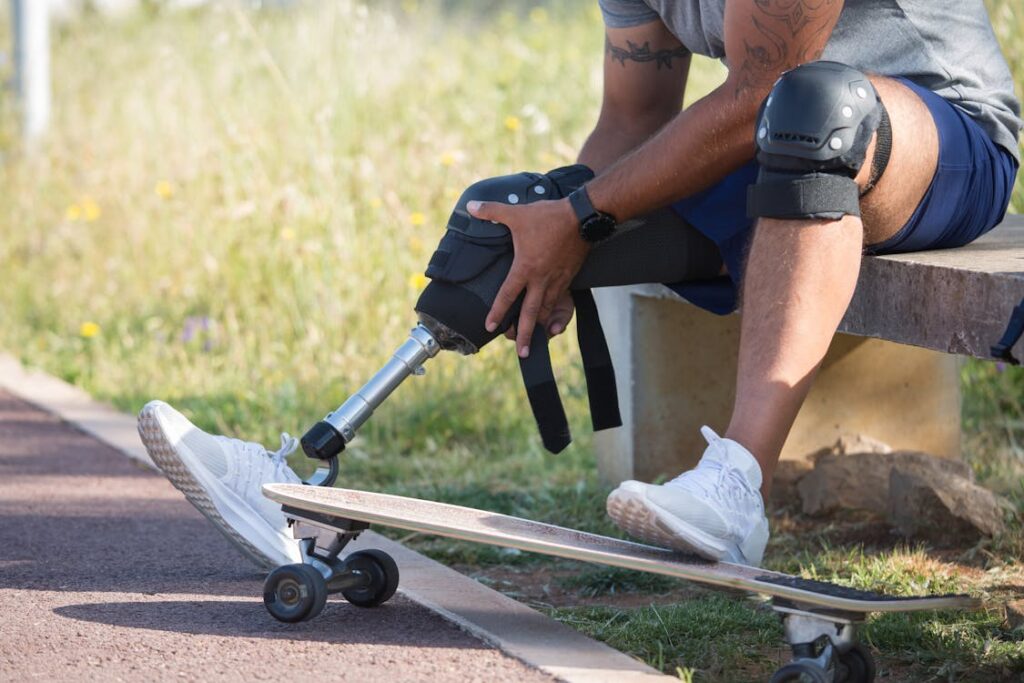
The Impact of Socket-Liner Interaction on Biomechanics
Why a Good Liner Alone Isn’t Enough
It’s easy to think of the liner as a standalone part — something soft that simply adds comfort. But in reality, the liner doesn’t operate in isolation. It functions in constant interaction with the socket, and together they influence the biomechanics of movement in powerful ways.
A liner may feel soft and well-cushioned on its own, but once it’s placed inside a rigid socket, the behavior changes.
Compression, movement, friction, and rebound all begin to play a role. The thickness of the liner, the firmness of the socket walls, and the user’s activity level create a complex relationship that can either improve gait mechanics or disrupt them entirely.
When the liner is too thick for the socket’s design, it may compress unevenly. This changes the limb’s alignment inside the socket, leading to instability or inefficient gait.
The user may unknowingly shift weight to compensate, which alters hip or knee movement. Over time, that misalignment can cause joint stress, posture issues, or even pain in the back, hips, or unaffected leg.
On the other hand, if the liner is too thin or compresses too easily, it may not offer enough shock absorption. The user may feel “bottomed out” during heel strike or struggle with impact control during walking or running.
This not only affects comfort but also increases strain on the residual limb and surrounding muscles.
The liner and socket must work as one system. They must be tuned to the user’s anatomy, weight, activity, and rhythm of movement.
This is especially true for users who engage in dynamic activities like sports, dancing, or long-distance walking. A mismatch in liner-socket interaction here can create subtle movement inefficiencies that build up into real-world problems.
Energy Return and Movement Efficiency
Another aspect that’s often overlooked is how liner materials affect energy return. Every time a person walks, the limb and prosthesis go through cycles of loading and unloading — essentially storing and releasing energy.
While most focus on the foot or pylon for energy return, the liner plays a role too.
A well-fitted, responsive liner can aid in movement efficiency by maintaining consistent contact during all phases of gait. It helps translate muscle action into controlled prosthetic motion.
If the liner is unstable or compresses unevenly, energy is lost — not visibly, but in small moments of slip or lag inside the socket. That can lead to fatigue, slower pace, or the need to overcompensate with the rest of the body.
In high-performance situations, like sports or physically demanding jobs, this loss of efficiency becomes even more important.
Every bit of energy counts, and liners that absorb too much or bounce too little can affect speed, agility, and confidence.
Even for casual walkers, this energy dynamic matters. A user might not notice it consciously, but they’ll feel it as tiredness at the end of the day.
When the liner and socket aren’t biomechanically synchronized, every step demands more effort than it should.
Micromovements and Shear Forces
Even when a socket seems well-fitted and the liner feels good initially, micromovements can disrupt the relationship over time.
These are the tiny shifts that happen with each step, especially if the limb doesn’t maintain firm contact through the full gait cycle.
These micromovements cause shear forces — sideways rubbing between the liner and the skin or between the liner and the socket.
Unlike direct pressure, which is vertical and easier to manage, shear forces are more likely to cause deep tissue injury and skin breakdown. They’re harder to detect and predict but have more severe long-term consequences.
Certain liner materials, especially those that compress significantly, are more prone to allowing micromovements.
That doesn’t mean they’re bad — it means they need to be paired with socket designs that account for and minimize those movements.
Textured inner surfaces, flexible socket walls, or tighter distal fits can help reduce the effects of shear.
Ultimately, comfort and skin health don’t just depend on the liner itself. They depend on how that liner behaves under motion, within the socket, in response to your body.
Conclusion
The liner is far more than a cushion — it’s the unsung hero of prosthetic comfort, control, and long-term wearability. The material you choose can shape everything from skin health to suspension, from energy efficiency to emotional confidence. It affects how you move, how long you wear your prosthesis, and how connected you feel to it.
A liner that suits your body, your environment, and your lifestyle doesn’t just improve comfort — it unlocks freedom. But that comfort isn’t automatic. It requires understanding how liner materials behave, how they interact with your socket, and how they adapt to real-life conditions like heat, movement, and daily wear.
In the end, success with a prosthesis isn’t only about high-tech components or perfect alignment. It’s about small, consistent comfort — every step of the way. And that begins with the liner.
Choose wisely. Listen to your body. And don’t settle for anything that keeps you from living fully.



